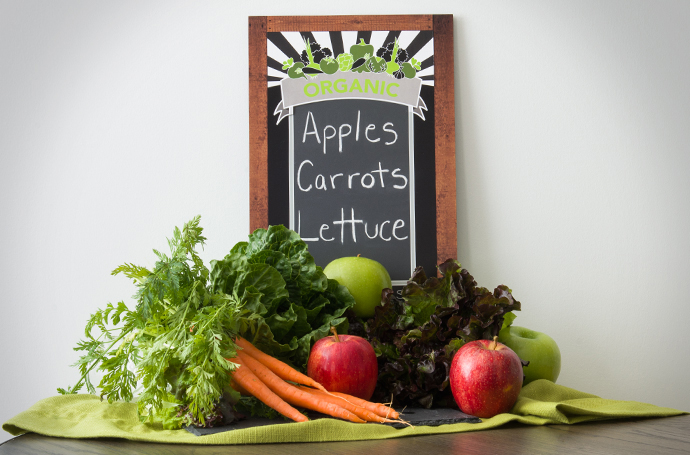The consumer demand to know what’s in food has become a movement in Congress known as the Genetically Engineered Food Right-to-Know Act, or Just Label It. Food can be marketed and labeled in many different ways, so we’ve broken down a few increasingly popular terms: natural, organic, and GMO-free. From regulatory definitions to label requirements, do you know the facts?
Natural
The term “natural” has no regulatory definition and no label requirements. The FDA is currently seeking comment from food community for its use on food labels, but historically hasn’t objected to its use if the food doesn’t contain added color, artificial flavors, or synthetic substances.
Organic
“Organic” indicates that the food or other agricultural product has been produced with methods approved by the United States Department of Agriculture’s National Organic Program. The standards are designed to allow natural substances and prohibit synthetic substances.
- 100% Organic means that all ingredients have been certified organic.
- Organic (95%) means that all agricultural ingredients have been certified organic, except those on the National List. Allowed nonorganic ingredients may be used, up to a combined total of five percent nonorganic content.
- Made with Organic (70%) means that at least 70% of the ingredients have been certified organic. Non-agricultural products must be named on the National List. There are strict regulations focused on agricultural production, although exceptions exist for some processed synthetic ingredients.
GMO-Free
Genetically modified organisms (GMOs) are organisms (e.g., plants, animals, or microorganisms) whose genetic material has been altered in a way that doesn’t occur by mating or natural recombination. The FDA prefers the term “genetic engineering” to “genetic modification” because it’s more precise. The FDA regulates foods from genetically engineered crops in conjunction with the U.S. Department of Agriculture (USDA) and the Environmental Protection Agency (EPA).
On July 29, 2016, then-President Obama signed into law the National Bioengineered Food Disclosure Standard, which directs USDA to establish a national standard to disclose certain food products or ingredients that are "bioengineered." At present, however, the Non-GMO project remains the North American market leader for GMO avoidance. It offers third-party verification based on the Non-GMO Project Standards, a frequently updated, consensus-based document crafted with the insight from dozens of industry experts.
What’s the Difference?
“Natural” is often used to inform consumer about food origin, processing, and handling—but it can be used even for items that contain genetically engineered ingredients. Anything with the “organic” label prohibits the use of genetically modified ingredients—and it’s a regulated claim. “GMO-Free” is relatively new, so they’re still developing regulations.
What Now?
At SAGE, we believe all foods fit. We always work to provide a wide variety, including organic and local options. We need more research to fully understand the impact of organic and genetically modified organisms on human health; however, we know for sure that consumption of fruits and vegetables has a positive impact. So be sure to included fruits and veggies—organic, genetically modified, or otherwise—as part of your daily eating pattern.
Sources
https://www.fda.gov/aboutfda/transparency/basics/ucm214868.htm https://www.ams.usda.gov/grades-standards/organic-standards https://ota.com/sites/default/files/indexed_files/OTA_Non-GMOVerification_FactSheet.pdf http://www.who.int/foodsafety/areas_work/food-technology/faq-genetically-modified-food/en/ https://www.fda.gov/Food/IngredientsPackagingLabeling/GEPlants/ucm346858.htm https://www.fda.gov/Food/IngredientsPackagingLabeling/GEPlants/ucm461805.htm http://www.justlabelit.org/ https://www.congress.gov/bill/114th-congress/house-bill/913








